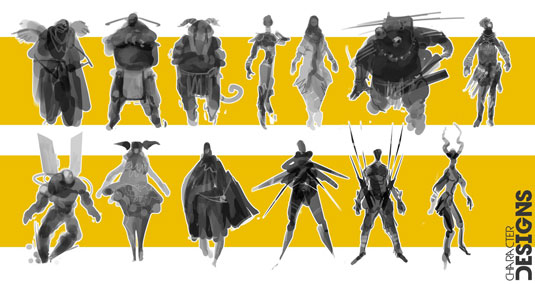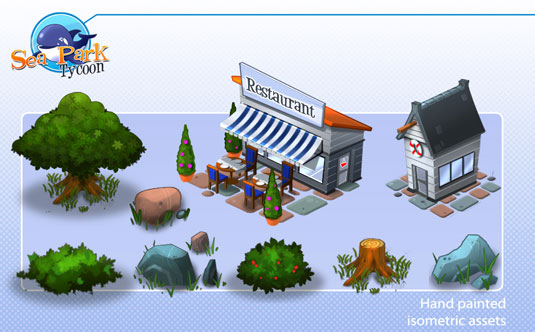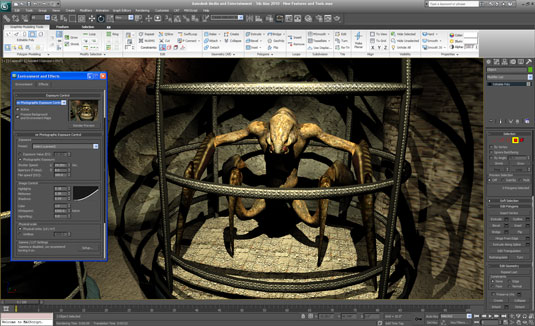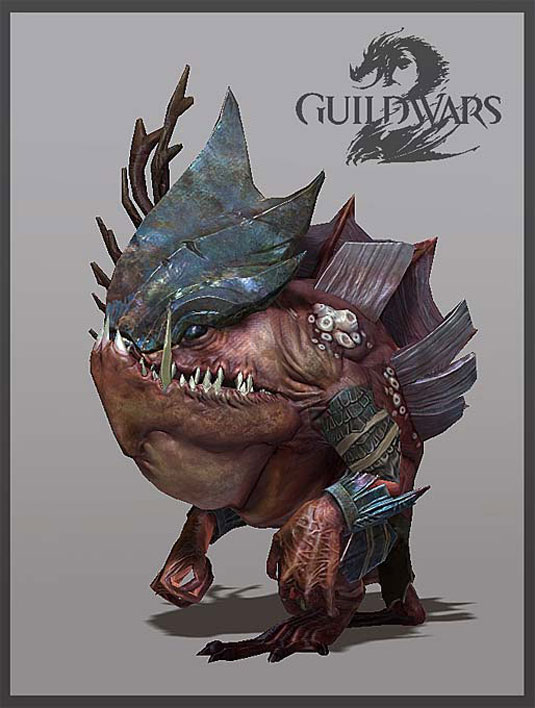Get started in videogame art
Want to put your design and illustration skills to use in the videogames industry? Concept artist Jason Pickthall reveals exactly what's involved.
Videogames, they are everywhere. They used to be the reserve of the console-owning hardcore. Now you can't pick up a phone or use a tablet device without being tempted.
Games are big business. Nowadays they're played by men, women, children, teenagers - everybody, basically. There is no better time to be a gamer, which should mean there's no better time to put your graphic design and illustration skills to work and become part of the ever-expanding games industry. To give you an idea of how it all works and how you can become involved, I'll walk you through the basics of how original gaming art gets from sketchpad to screen...
2D software
Programs like Photoshop CS6 are used in a multitude of ways in the gaming industry.
It could be visualising concepts in the early stages. Or, if you are working on a real-time 3D game, then a 2D art package may be used create the texture maps that wrap around your model to give it colour and detail.
Texture maps are usually created by manipulating photographic reference, or painted from scratch.

2D art software can also be used to create fun 2D sprite graphics like those seen on the more popular games on iPhone/iPad.

The industry standard is Photoshop but Gimp and Paint.net are decent free alternatives.
Get the Creative Bloq Newsletter
Daily design news, reviews, how-tos and more, as picked by the editors.
3D software
3D software is used by the games industry to create the 3D models to go into the game environment. Using triangles and polygons, complex forms can be created with relative ease once you know your way around the interface.
As well as being able to realise designs in 3D, the real skill is achieving the best result with the least amount of polygons/quads. This number will depend on the device you are making it for.
A PC, Xbox, and PS3 will handle substantially more detailed models than an iPad or Android device for example.
3D animation
3D software is also where the animation is created for a videogame. This can happen either by keyframing, or for a more super realistic look, by importing motion capture data.

The industry standard 3D software is Autodesk's 3DS Max or Maya but Blender is free and will give you a taste of 3D.
Surfacing tools
Sculpting programs are essential to get the super level of detail found in today’s console games. Models are usually exported from the 3D package of choice and imported into ZBrush or Mudbox.
Think of the process like moulding with clay. It’s here that all the fine surface detail is added. When you’re done, texture maps of various types can be exported out to be used with the original 3D model. Sculpting tools are essential for any character artist.
The industry standard is Pixologic Z Brush and Autodesk Mudbox. Sculptris is an excellent and free introduction to 3D sculpting, also produced by Pixologic.

The enviroment
So you've designed your characters/environments/vehicles in Photoshop. You've lovingly modeled them and animated them in 3DS Max. You've added surface detail in ZBrush. What next?
In order to run the various functions, a game has to offer an environment either has to be programmed or, most commonly, purchased. These take the shape of game engines.
Game engines
Game engines allow artists to export their assets into a game environment with lighting and a camera set up. It also allows game designers to script and create how the game actually plays. It certainly helps to have a programmer on board too.
The most common game engines are Epic's UDK Engine (used to create Unreal Tournament and the basis of Gears or War series on the Xbox 360 and Infinity Blade on the iPad to name but a few) and Unity Engine, which is a versatile and popular cross platform engine. Both have free demos available.
Those are the basics of how a videogame is created. To learn more about 3D software, check out Creative Bloq's sister magazines 3D World while Edge magazine contains all you need to know about the latest news, jobs and developments from the videogames industry: especially check out the Get Into Games section on its website.
Words: Jason Pickthall
- Jason Pickthall has 10 years' experience in the videogames industry. He currently works as a senior concept artist at FreeStyleGames, an Activision Studio, and blogs at Pickthall Sketches.
Liked this? Then read these!
- The top 5 video games trailers of 2012
- 20 best designs in video games
- The Art of Gears of War: a masterclass in game design

Thank you for reading 5 articles this month* Join now for unlimited access
Enjoy your first month for just £1 / $1 / €1
*Read 5 free articles per month without a subscription

Join now for unlimited access
Try first month for just £1 / $1 / €1

The Creative Bloq team is made up of a group of art and design enthusiasts, and has changed and evolved since Creative Bloq began back in 2012. The current website team consists of eight full-time members of staff: Editor Georgia Coggan, Deputy Editor Rosie Hilder, Ecommerce Editor Beren Neale, Senior News Editor Daniel Piper, Editor, Digital Art and 3D Ian Dean, Tech Reviews Editor Erlingur Einarsson, Ecommerce Writer Beth Nicholls and Staff Writer Natalie Fear, as well as a roster of freelancers from around the world. The ImagineFX magazine team also pitch in, ensuring that content from leading digital art publication ImagineFX is represented on Creative Bloq.
